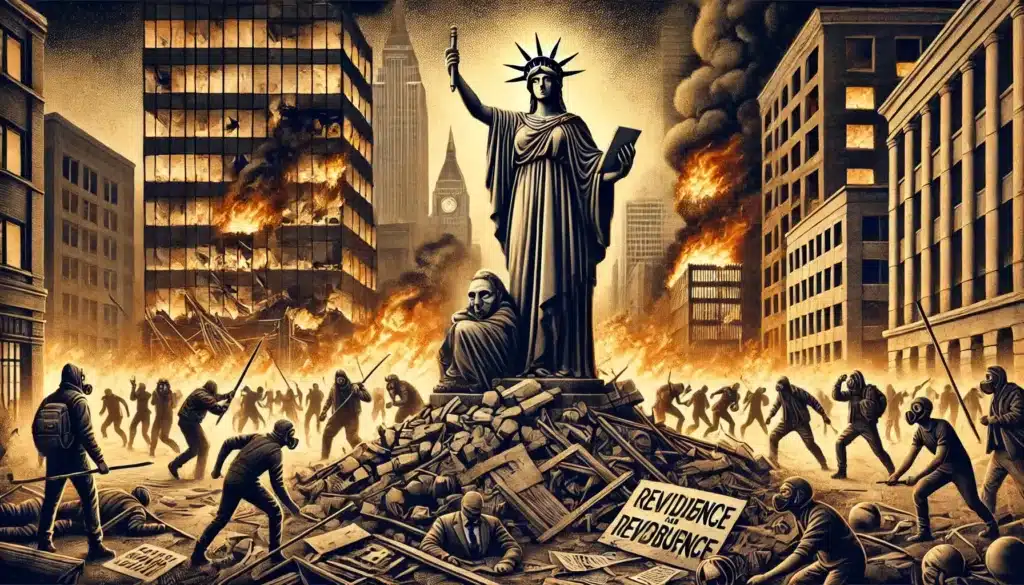Portland 2020 Explained – Utopia Meets Anarchy
From Justice to Chaos
After George Floyd’s death, protests spread across the U.S. But in Portland, Oregon, they lasted longer, burned hotter, and spiralled faster than almost anywhere else. What began as a call for justice turned into a nightly experiment in anarchy — where Antifa, BLM activists, and radical groups tested what a “society without police or capitalism” might look like.
Table of contents
What Was the Portland Uprising?
In summer 2020, Portland became the epicentre of unrest. Vigils by day turned into riots by night. Government buildings were torched, businesses looted, and clashes with police routine.
The slogans spoke of justice. The tactics revealed something else: a push to dismantle authority and destabilise the city.
Buzzwords of the Uprising
- Defund the Police → not just reform, but abolish law enforcement.
- Abolish Capitalism → small businesses and shops targeted as “symbols of oppression.”
- No Justice, No Peace → used to justify escalating violence.
- Community Autonomy → code for anarchist self-rule.
How It Showed Up in Practice
- Street battles → nightly clashes with police, federal agents, and counter-protesters.
- Arson & vandalism → courthouses, precincts, and businesses attacked.
- Human shields → peaceful protesters placed at the front to provoke outrage at police pushback.
- Media spin → social media highlighted vigils, downplayed the fires and violence.
Who Benefited?
- Anarchist groups → Rose City Antifa and allies gained visibility and recruits.
- National activists → Portland became proof of concept for “abolitionist” politics.
- Media & politicians → exploited the chaos for clicks and campaigns.
- Losers → local residents, minority-owned businesses, and neighbourhoods left in ruins.
The Consequences
The Portland uprising revealed the cost of ideology over order:
- Deaths → multiple shootings inside protest zones.
- Economic devastation → businesses shuttered permanently.
- Polarisation → moderates alienated, extremes empowered.
- Lost opportunity → genuine reform drowned in fire and chaos.
Why It Matters
Portland 2020 showed how justice movements can be hijacked by radical factions. Instead of reform, the city got riots. Instead of unity, division. Instead of progress, destruction.
The lesson: noble causes collapse when extremists run the show.
The Utopia That Never Was
The Portland uprising promised a new society built on justice. What it delivered was arson, intimidation, and disillusionment. It wasn’t the future — just a warning of how quickly activism can curdle into anarchy.
👉 Want the bigger picture? Explore our full Activism Explainer Hub to see how movements, tactics, and ideologies shape modern politics.
FAQ
What triggered the Portland 2020 protests?
The killing of George Floyd sparked protests nationwide. In Portland, they escalated into nightly riots.
Who was involved?
A mix of BLM activists, Rose City Antifa, anarchist groups, and local protesters.
Why was Portland unique?
Protests lasted for months, with constant clashes, vandalism, and the creation of anarchist “autonomous” zones.
Did Portland achieve reform?
No major reforms came. Instead, the violence discredited the movement and deepened division.
Why does Portland 2020 matter today?
It’s a case study in how justice can be hijacked by radicals — and how chaos helps elites avoid real reform.



